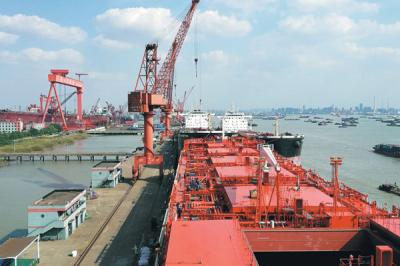More than 70 percent of the earth surface is covered by water, but the freshwater resources necessary for human survival only take up 2.5 percent of it, and the rest 97.5 percent is undrinkable seawater. Seawater desalination is an important way to solve the shortage of water resources. As the name implies, desalination water treatment is the process of obtaining fresh water from seawater. At present, the seawater desalination methods include seawater freezing method, electrodialysis method, distillation method, reverse osmosis method, and ammonium carbonate ion exchange method. Currently, the spiral RO membrane method and distillation method are main methods in the market.
According to the data from Department of Natural Resources and from the distribution and the number of projects in the field of seawater desalination application, by the end of 2018, there were 121 projects applying spiral RO technology in China, accounting for 85.21% of the total number of projects and ranking the first. The second is low-temperature MED technology used by 16 projects, which accounts for 11.27%. The data also shows that the spiral RO membrane technology has become the main technology in the field of seawater desalination.
The RO membrane technology uses RO membrane to separate the water and salt in seawater. By applying high pressure on one side of RO membrane to the incoming seawater, a part of pure water in seawater will pass through the RO membrane to the other side. The fresh water is accordingly produced and the salt will be discharged along with the concentrated water. The specific process is as follows: The seawater must first be pretreated to remove suspended solids, large particulates and other harmful substances. By applying the high pressure pump, the pressure of seawater rises, and the seawater enters the spiral RO membrane machine to overcome the osmotic pressure and produce fresh water, then the concentrated water will be discharged from the other side of the spiral RO membrane equipment. The fresh water produced by RO should be treated for the required use, like adjusting the pH value. The pressure of the high pressure pump in RO method is very high, which is up to 5 MPa to7 MPa, so there are only a few pump types to choose from. The pumps are usually centrifugal pumps, high speed pumps, single screw pumps and reciprocating pumps. The RO process needs to overcome osmotic pressure, so the seawater needs great pressure to pass through the RO membrane, and the energy is also mainly consumed in the process. In general large RO equipment, there will be energy recovery device installed on the concentrated water discharge pipeline, so as to save energy consumption and reduce operating costs.
1. There is no phase change in the whole process, and the energy consumption is low. The power consumption per ton of water is about 3.0-5.5 KWh.
2. Low equipment cost, compact device and less floor space make it easier to be accepted by the civil market.
3. The operation and maintenance of RO seawater desalination device is easy and convenient.
4. The RO seawater desalination membrane has high pressure bearing capacity and large membrane flux.
5. The RO seawater desalination membrane has high removal rate of sodium chloride and boron.
(1) The application of RO membrane in desalination of seawater. With the increasing scarcity of fresh water resources, desalination of seawater has become an important way to get fresh water in many countries, especially in the Middle East, where water shortages are severe. Due to the high salt content of seawater, the two-stage reverse osmosis system is generally required for desalting seawater with reverse osmosis membrane technology, so the cost of desalting seawater is relatively high, but the treated water can reach the drinkable standard. Before the seawater enters the reverse osmosis device, it needs to go through sterilization, coagulation, filtration and other treatment processes, and the pH value should be adjusted to about 6. If adopting chlorine sterilization, it still needs to use activated carbon to remove the remaining chlorine on membrane components with poor resistance to chlorine or use sodium bisulfite to carry out the reduction treatment.
(2) The application of RO membrane in bitter water desalination. Compared with seawater, bitter water generally has a much lower salt content, and it usually refers to the natural water, surface water and artesian well water with a salt content of 1500~5000 mg/L. Bitter water is usually the main part of the available water in many water-scarce regions of the world.
After decades of development, the properties of spiral RO membrane have been improved. The membrane materials have developed from the initial single cellulose acetate asymmetric membrane to new material and efficient membrane such as the cross-linked aromatic polyamide composite membrane made by surface polymerization technique. The pretreatment technology has progressed, and the energy recovery efficiency has been improved, whereupon RO membrane has become the most cost-effective seawater desalination technology with a wide range of applications.




 +86-25-58849045
+86-25-58849045
 +86-25-58749295
+86-25-58749295
 jiuwu@jiuwu.com
jiuwu@jiuwu.com
 No. 9 Park Road, Pukou District, Nanjing City (Sanqiao Factory)
No. 9 Park Road, Pukou District, Nanjing City (Sanqiao Factory) Call us on:
Call us on:  Email Us:
Email Us:  No. 9 Park Road, Pukou District, Nanjing City (Sanqiao Factory)
No. 9 Park Road, Pukou District, Nanjing City (Sanqiao Factory)

 English
English 한국어
한국어 français
français русский
русский Español
Español
